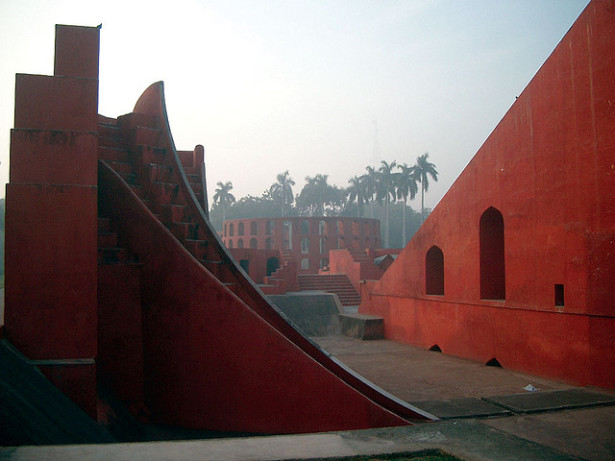Jantar Mantar Road, a short passageway through the administrative center of New Delhi, takes its name from a complex of gigantic red astronomical instruments at its north terminus, built by Maharaja Jai Singh II in 1724. The Jantar Mantar consists of a series of geometric jungle gyms that surround the all-important shadow of the Supreme Instrument, a four-story, right-triangular sundial surrounded by semi-circular wings. The complex reflects the style of politics practiced by its autocratic creator — one based on charting the positions of the sun and planets across the zodiac with maximum pomp and precision.
The road named after the Jantar Mantar, however, better reflects the aspirations of India’s past few decades as the world’s most populous democracy. In the space of several hundred yards between two sets of hand-painted red-and-yellow police barricades, an assortment of political and religious outfits have set up tents, encampments and shrines each dedicated to some particular cause — for the prosecution of a high-placed rapist, for the rights of migrant workers, for various flavors of spiritual-social awakening. Several tents contain men on hunger strikes, each reclining on a couch and nursed by supporters, on behalf of a petition like airline employee pensions or voting rights for Indians living abroad. Despite the amplified speeches and droning chants, Jantar Mantar Road is a respite from Delhi’s non-stop hustle; people slowly mill through to listen, strike up conversations and eat deep-fried snacks.
Read the rest at Waging Nonviolence or openDemocracy.
